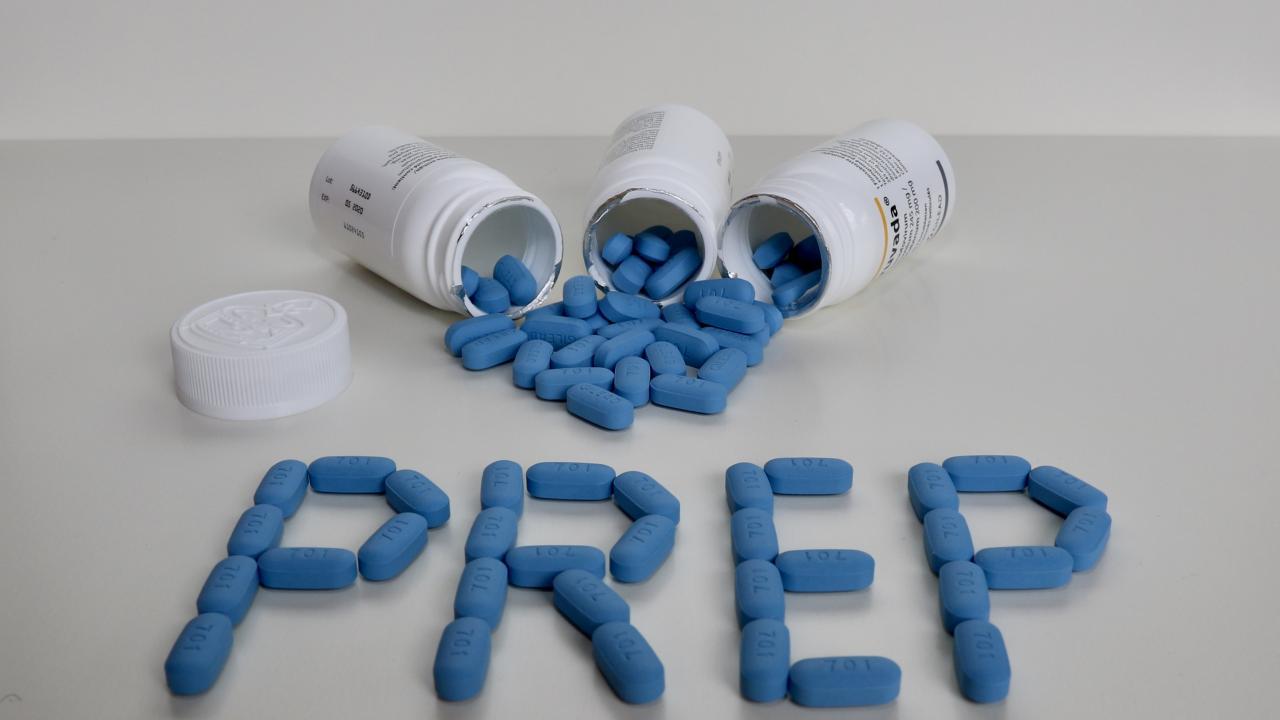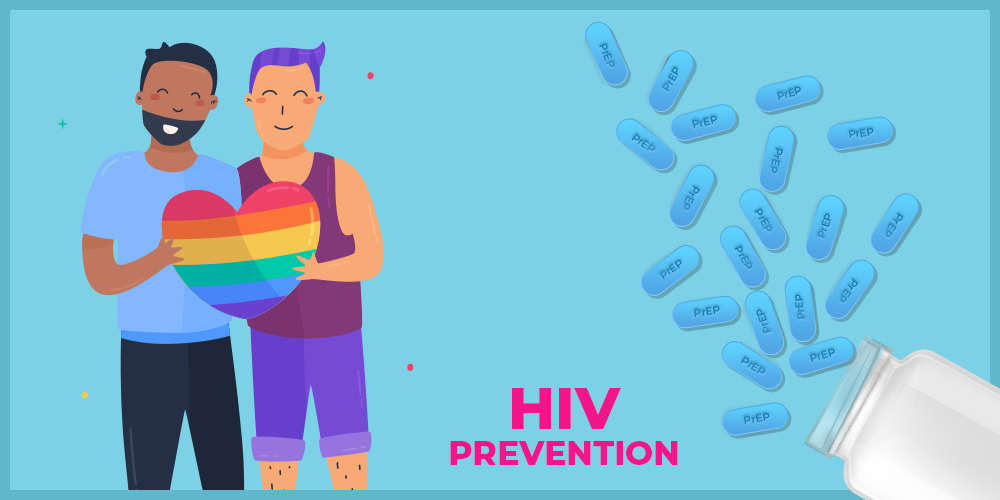
Nearly 70% of people living with HIV are homosexual and bisexual men – and thankfully the use of PrEP for HIV prevention is increasing among this group. According to a recent study, the number of gay and bisexual males taking PrEP increased by 500% from 2014 to 2017. However, only 35% of gay and bisexual males who were at high-risk of HIV transmission were taking the medication.
It is important that everyone takes the proper precautions to protect themselves from HIV transmission. While some people are at more risk than others due to lifestyle choices or other practices, there is a common misconception that your risk of HIV transmission is higher or lower depending on your sexual orientation or preferred sexual position.
PrEP is designed to help protect any person – regardless of sexual orientation – from HIV transmission. But, you may be wondering if PrEP could affect you differently or be more or less effective depending on if you are a top, bottom, or vers.
For instance, many tops assume they do not need to take PrEP since they are at a lower risk of contracting HIV than a bottom – since they are not penetrated.
So, does PrEP work differently for tops and bottoms?
Well first, let’s explain what puts you most at risk for HIV transmission and why you should consider taking PrEP in the first place – regardless of sexual orientation.
Are You at High Risk?

PrEP is a medication that is recommended for people who are at a high risk of HIV transmission. Some of the leading causes of HIV transmission include:
- Engaging in unprotected sex (not using a condom) with a partner who is HIV positive or whose HIV status is unknown.
- Engaging in unprotected sex with partners who have additional sexual partners.
- Having unprotected sex if you have been diagnosed with an STI.
- Sharing needles or syringes.
The only way HIV can be transmitted to another person is through contact with blood, semen, or vaginal fluids. It is also important to note that uncircumcised males are at a slightly higher risk of contracting HIV – since they are more prone to bacteria and infections. There is evidence that male circumcision can also reduce the risk of HIV transmission.
Homosexual and bisexual males are typically at a higher risk of contracting HIV. The transmission rate through anal sex is more than ten times greater than through vaginal intercourse. Receptive anal sex also has a higher transmission rate, meaning that the risk of HIV transmission is higher for bottoms than for tops.
However, this does not mean that tops are not at risk as the insertive partner may also contract HIV through anal intercourse. So, whether you are a top, a bottom, or versatile, you could be at a high risk of HIV transmission, and you should consider taking PrEP.
What Does PrEP Do?

PrEP (pre-exposure prophylaxis) is a medication that helps to reduce the risk of HIV transmission by preventing the virus from multiplying or growing within the body. PrEP is a combination of two drugs which help to fight off infection and also stop HIV from reproducing within a healthy host.
Before a person can be prescribed PrEP by their doctor, they must first be tested for HIV. PrEP is intended to be taken before a person is exposed; therefore, if they already have HIV, they need to seek another HIV treatment as opposed to PrEP.
PrEP must be taken daily for at least seven days before it is effective at preventing HIV transmission through anal sex. This is because PrEP tends to collect in the colorectal tissue first before it is more present in other bodily tissues. However, it is still recommended that condoms are used during intercourse for additional protection.
What Does PrEP Not Do?

It is important to clarify that PrEP does not cure HIV – it prevents a person who is HIV negative from contracting the virus if they are exposed to it.
PrEP does not protect anyone from other STDs, such as chlamydia, gonorrhea, herpes, or syphilis. It is also recommended that you continue to use condoms during sexual intercourse while on PrEP to provide the highest amount of protection from HIV transmission and STD/STI prevention.
Taking PrEP is the best way to protect yourself and your partner from HIV transmission. However, even if you take the medication, you should also do anything that you can to lower your HIV transmission risk by:
- Always using condoms during sexual contact.
- Getting regularly checked for STIs and STDs.
- Requesting sexual partners to be checked for STIs and STDs and knowing their HIV status.
- Never sharing needles or syringes with others.
While taking PrEP should not by any means deter you from using a condom during intercourse, it can actually be quite empowering for homosexual men who prefer to bottom during intercourse.
Bottoms are typically at a higher risk for HIV transmission, since they rely on the top to wear a condom – and HIV is transmitted more commonly through anal intercourse. This gives the bottom less control over protection. However, by taking PrEP, bottoms can be significantly more empowered to protect themselves from HIV transmission.
PrEP can also help to remove some of the anxiety that is experienced during sexual intercourse, as gay and bisexual men are often fearful of transmission – particularly if a condom is not worn or if it breaks. Being on PrEP nearly eliminates the risk of HIV transmission in this case.
What Medication is Available?

There are currently two medications approved by the FDA for PrEP: Truvada and Descovy.
Both of these medications can be up to 99% effective at HIV prevention when taken correctly. However, the notable difference between these medications is that Descovy is currently only approved for use in cisgender males and transgender females, while Truvada is approved for all genders.
PrEP does not have any significant health effects even with long-term use, but you may experience some side effects, such as:
- Rash
- Headaches
- Diarrhea
- Vomiting or nausea
- Loss of appetite
- Abdominal pain
- Changes in weight
Some more severe side effects that may occur can be kidney issues, liver problems, or bone density loss. But these often occur in people who had health issues prior to taking PrEP. Ultimately, it is between you and your doctor to determine whether or not PrEP is the best choice for you.
How do I Get PrEP?
PrEP can only be prescribed by a doctor, so you will need to talk to a physician about taking it. Your doctor may ask you some questions to determine your risk factors for HIV transmission – and then discuss your options.
You will first need to be tested to ensure that you do not currently have HIV. This involves a simple blood test – and the results will be available in a matter of days.
If you have insurance, the cost of HIV should be completely covered or you may have to make a small co-pay. Some or all of your medication costs may also be covered under Medicare or Medicaid. If you do not have insurance, there are some options to help you be able to afford PrEP, including the Cost Assistance program from Gilead.
Conclusion
No matter your sexual orientation or preferred position, if you are at risk of HIV transmission, you should consider taking PrEP. This is by far the best way to protect yourself from HIV transmission, in addition to safer practices to lower your risk.
If you have any further questions regarding PrEP and want to learn more, please contact us at PrEP Daily. We have a team of Navigators to work with you on an individual basis to answer any questions and get you connected with a healthcare provider.

